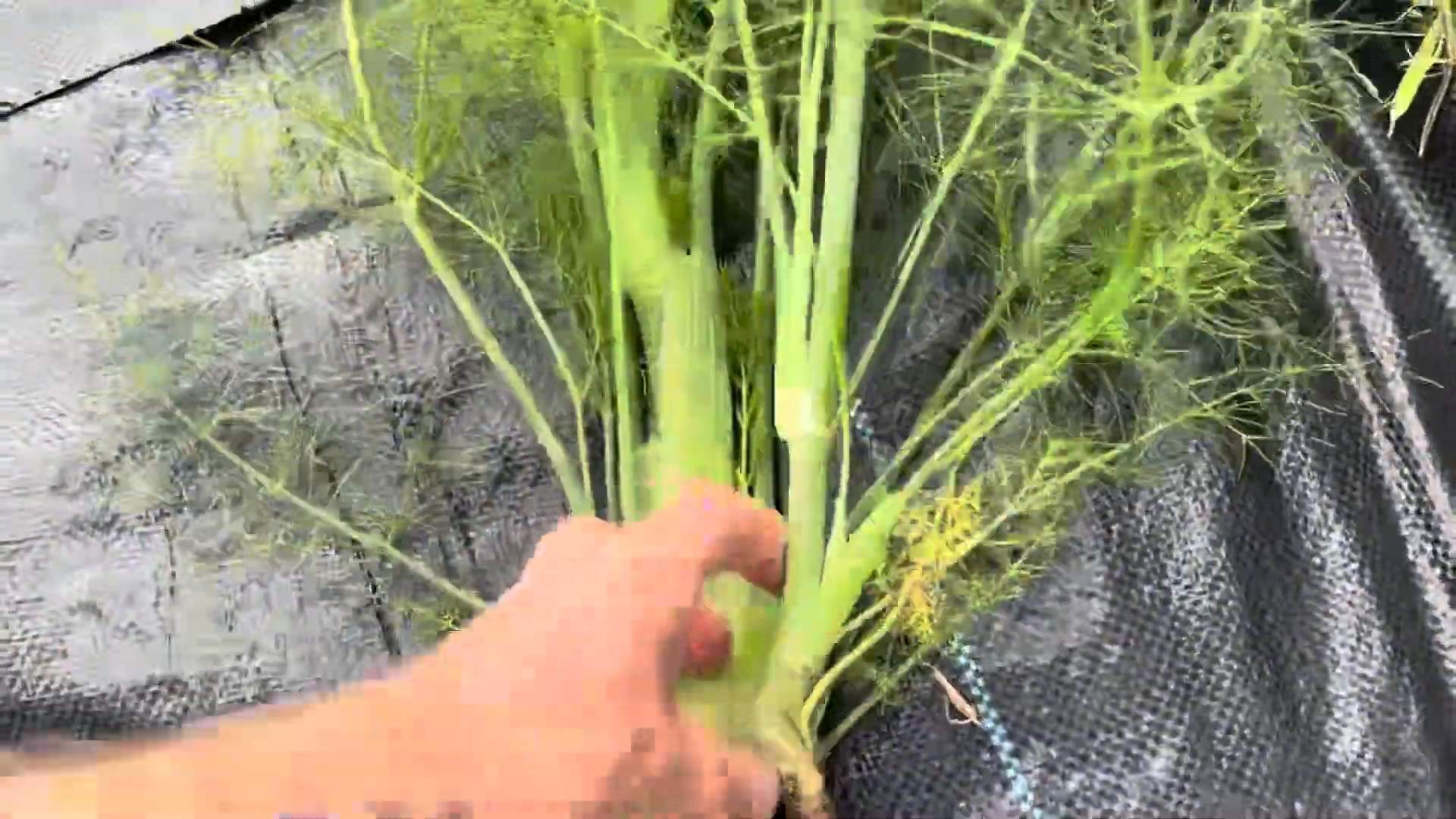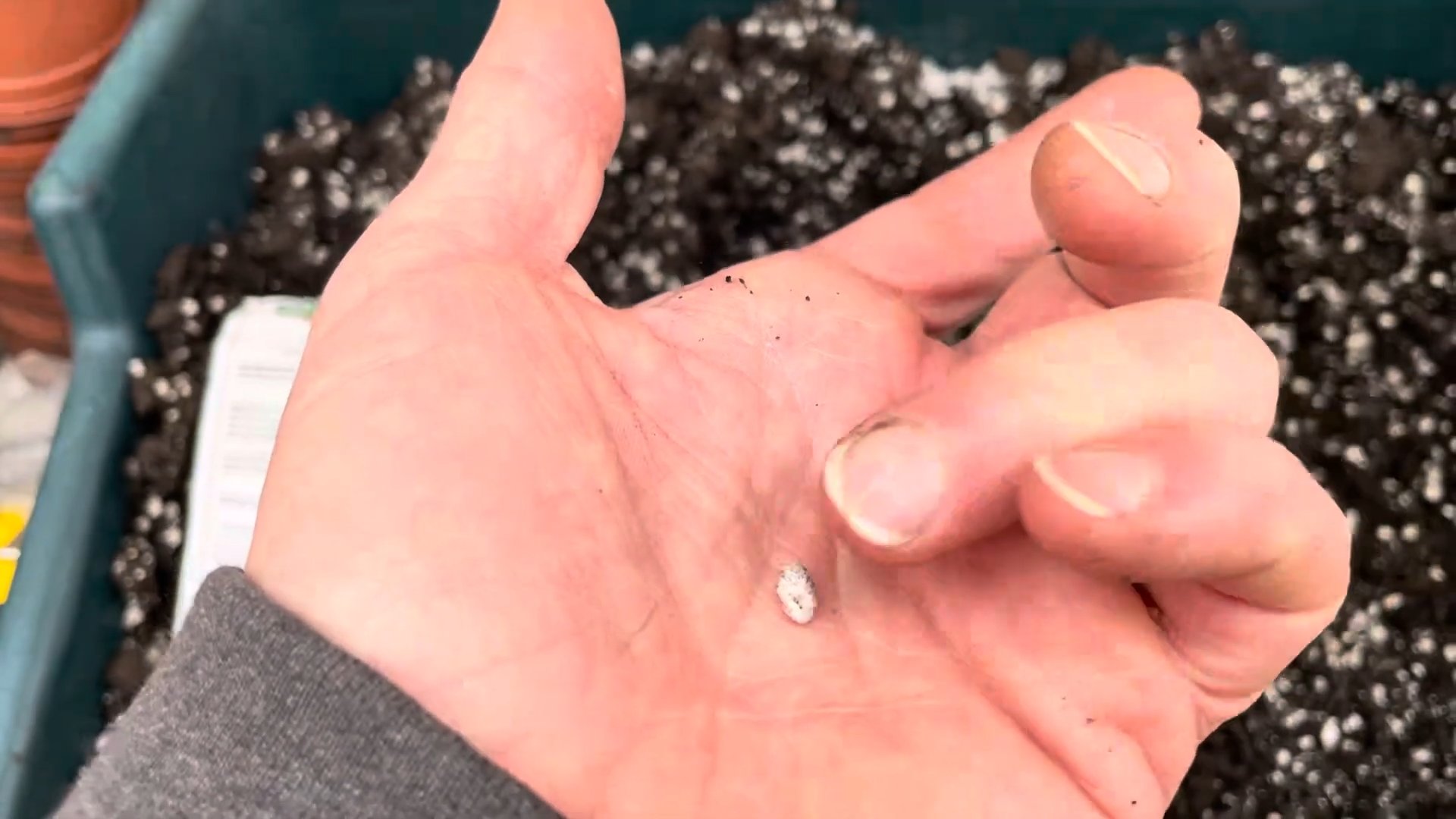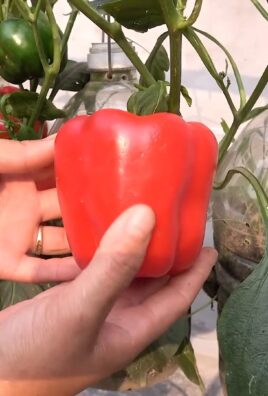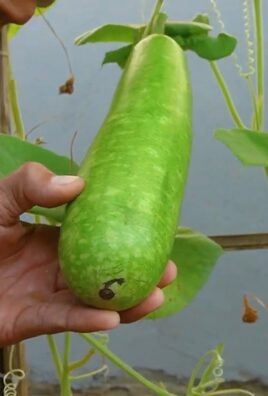Growing Fennel at Home might seem intimidating, but trust me, it’s easier than you think! Imagine stepping into your backyard and snipping fresh, fragrant fennel fronds to add a burst of anise-like flavor to your salads, soups, or even grilled fish. Forget those sad, wilted bulbs at the grocery store – we’re talking about vibrant, homegrown goodness right at your fingertips.
Fennel has a rich history, dating back to ancient civilizations where it was prized for its medicinal properties and culinary uses. The Romans believed it bestowed strength and longevity, while in medieval times, it was hung over doorways to ward off evil spirits. Today, while we might not be battling demons, we are battling rising grocery costs and the desire for fresher, healthier food. That’s where these DIY tricks come in!
Let’s face it, we all want to save money and enjoy the satisfaction of growing our own food. Growing Fennel at Home offers a fantastic way to do just that. This article will equip you with simple, effective DIY hacks to cultivate thriving fennel plants, even if you have limited space or gardening experience. I’ll share my tried-and-true methods for everything from seed starting to harvesting, ensuring you’ll be enjoying the delicious benefits of homegrown fennel in no time. So, grab your gardening gloves, and let’s get started!

Growing Fennel at Home: A Beginner’s Guide
Hey there, fellow gardening enthusiasts! Ever thought about growing your own fennel? It’s surprisingly easy and rewarding. Not only does it add a unique flavor to your dishes, but it also looks beautiful in the garden. I’m going to walk you through everything you need to know to successfully grow fennel at home, from seed to harvest. Let’s get started!
Choosing Your Fennel Variety
Before we dive into the nitty-gritty, let’s talk about the different types of fennel you can grow. There are two main categories: bulb fennel (also known as Florence fennel) and herb fennel.
* Bulb Fennel (Florence Fennel): This is the type you’ll find in most grocery stores. It’s grown for its swollen bulb at the base, which has a mild anise flavor. Popular varieties include ‘Perfection,’ ‘Rondo,’ and ‘Zefa Fino.’
* Herb Fennel: This type is grown primarily for its feathery leaves and seeds. It doesn’t form a bulb. Bronze fennel is a particularly attractive variety with dark, coppery foliage.
For this guide, I’ll focus primarily on growing bulb fennel, but the general principles apply to herb fennel as well.
Getting Started: Planting Fennel
Fennel can be a bit finicky about transplanting, so I recommend direct sowing whenever possible. Here’s how to do it:
1. Choose the Right Time: Fennel prefers cooler weather. The best time to plant is in early spring (after the last frost) or late summer for a fall harvest. In warmer climates, you can even plant in early fall for a winter harvest.
2. Prepare the Soil: Fennel needs well-drained soil that’s rich in organic matter. Amend your soil with compost or well-rotted manure before planting. Aim for a pH between 6.0 and 7.0.
3. Sow the Seeds: Sow the seeds directly into the ground about ½ inch deep and 2-3 inches apart. Gently cover them with soil and water thoroughly.
4. Thin the Seedlings: Once the seedlings emerge (usually in 7-14 days), thin them to about 8-12 inches apart for bulb fennel and 12-18 inches apart for herb fennel. This gives them enough room to grow and develop properly.
Caring for Your Fennel Plants
Once your fennel plants are established, they’re relatively low-maintenance. Here’s what you need to do to keep them happy and healthy:
1. Watering: Fennel needs consistent moisture, especially during hot, dry weather. Water deeply whenever the top inch of soil feels dry. Avoid overwatering, as this can lead to root rot.
2. Fertilizing: Feed your fennel plants with a balanced fertilizer every 4-6 weeks. You can also side-dress them with compost or well-rotted manure.
3. Weeding: Keep the area around your fennel plants free of weeds. Weeds compete for nutrients and water, which can stunt the growth of your fennel.
4. Pest Control: Fennel is generally pest-resistant, but it can sometimes be bothered by aphids or slugs. If you notice any pests, you can try spraying them with insecticidal soap or hand-picking them off the plants.
5. Blanching (for Bulb Fennel): To get a whiter, more tender bulb, you can blanch it by mounding soil around the base of the plant when it’s about halfway to maturity. This blocks sunlight and prevents the bulb from turning green.
Harvesting Your Fennel
The timing of your harvest will depend on the type of fennel you’re growing and the weather conditions.
1. Harvesting Bulb Fennel: You can harvest bulb fennel when the bulb is about the size of a tennis ball. Gently loosen the soil around the base of the plant and pull it up. You can also cut the bulb off at the base, leaving the roots in the ground to potentially regrow.
2. Harvesting Herb Fennel: You can harvest the leaves of herb fennel at any time. Simply snip off the leaves as needed. The seeds can be harvested when they turn brown and dry. Cut the seed heads off the plant and hang them upside down in a paper bag to dry. Once they’re dry, you can shake the seeds out of the bag.
Troubleshooting Common Fennel Problems
Even with the best care, you might encounter a few problems when growing fennel. Here are some common issues and how to deal with them:
* Bolting: Bolting is when the plant prematurely flowers and goes to seed. This can happen if the weather gets too hot or if the plant is stressed. To prevent bolting, plant fennel in a cool location and water it regularly. If your fennel does bolt, you can still harvest the leaves and seeds, but the bulb may become tough and bitter.
* Root Rot: Root rot is a fungal disease that can occur if the soil is too wet. To prevent root rot, make sure your soil is well-drained and avoid overwatering. If you notice signs of root rot (such as yellowing leaves or wilting), you can try transplanting the plant to a drier location.
* Aphids: Aphids are small, sap-sucking insects that can infest fennel plants. They can cause the leaves to become distorted and yellow. To control aphids, you can spray them with insecticidal soap or release beneficial insects such as ladybugs.
* Slugs: Slugs are slimy pests that can eat holes in the leaves of fennel plants. To control slugs, you can set out slug traps or sprinkle diatomaceous earth around the base of the plants.
Fennel’s Culinary Uses
Now for the fun part: using your homegrown fennel in the kitchen! Fennel is a versatile ingredient that can be used in a variety of dishes.
* Bulb Fennel: The bulb can be eaten raw in salads, grilled, roasted, or braised. It has a mild anise flavor that pairs well with seafood, pork, and vegetables.
* Fennel Leaves: The feathery leaves can be used as a garnish or added to salads, soups, and stews. They have a slightly stronger anise flavor than the bulb.
* Fennel Seeds: The seeds can be used as a spice in breads, sausages, and other dishes. They have a warm, licorice-like flavor.
Step-by-Step Instructions: Growing Fennel from Seed
Let’s break down the process into easy-to-follow steps:
1. Gather Your Supplies: You’ll need fennel seeds, well-draining soil (or potting mix if starting indoors), a trowel, a watering can, and a sunny location.
2. Prepare the Planting Area: Choose a spot in your garden that gets at least 6 hours of sunlight per day. Clear the area of weeds and rocks, and amend the soil with compost or well-rotted manure.
3. Sow the Seeds: Make shallow furrows in the soil, about ½ inch deep and 2-3 inches apart. Sprinkle the fennel seeds into the furrows and gently cover them with soil.
4. Water Thoroughly: Water the planting area gently but thoroughly, making sure the soil is evenly moist.
5. Keep the Soil Moist: Keep the soil consistently moist until the seeds germinate. This may require watering daily, especially in hot weather.
6. Thin the Seedlings: Once the seedlings emerge, thin them to about 8-12 inches apart for bulb fennel and 12-18 inches apart for herb fennel.
7. Water Regularly: Water your fennel plants deeply whenever the top inch of soil feels dry.
8. Fertilize as Needed: Feed your fennel plants with a balanced fertilizer every 4-6 weeks.
9. Monitor for Pests and Diseases: Keep an eye out for pests and diseases, and take action as needed.
10. Harvest When Ready: Harvest the bulb when it’s about the size of a tennis ball, or harvest the leaves as needed.
Section: Starting Fennel Indoors (Optional)
If you live in a colder climate or want to get a head start on the growing season, you can start fennel indoors.
1. Choose Your Containers: Use small pots or seed trays filled with well-draining potting mix.
2. Sow the Seeds: Sow the seeds about ½ inch deep in the potting mix.
3. Water Gently: Water the potting mix gently but thoroughly.
4. Provide Light: Place the containers in a sunny window or under grow lights.
5. Keep the Soil Moist: Keep the potting mix consistently moist until the seeds germinate.
6. Harden Off the Seedlings: Before transplanting the seedlings outdoors, you’ll need to harden them off. This means gradually exposing them to outdoor conditions over

Conclusion
So, there you have it! Growing fennel at home isn’t just a gardening project; it’s an investment in fresh, flavorful ingredients right at your fingertips. We’ve walked through the process, from selecting the right variety to harvesting your bounty, and hopefully, dispelled any myths about fennel being a difficult plant to cultivate.
Why is this DIY trick a must-try? Because store-bought fennel simply can’t compare to the vibrant anise flavor and crisp texture of homegrown. Imagine the difference in your salads, soups, and roasted dishes when you’re using fennel that was harvested just hours before. Plus, you’re reducing your carbon footprint by sourcing locally (from your own backyard!), and you’re gaining a deeper connection to the food you eat. It’s a win-win-win!
But the benefits extend beyond just the culinary. Fennel is a beautiful plant, adding a touch of elegance to any garden with its feathery fronds and bright yellow flowers. It attracts beneficial insects, contributing to a healthier ecosystem in your backyard. And let’s not forget the satisfaction of nurturing something from seed to harvest – it’s a truly rewarding experience.
Looking for variations? Consider these ideas:
* Bronze Fennel: For a visually striking addition to your garden, try growing bronze fennel. Its dark, almost purple foliage adds a dramatic contrast to other plants. The flavor is similar to green fennel, but perhaps a touch more intense.
* Fennel Pollen: Don’t discard the flowers! Fennel pollen is a culinary treasure, with a concentrated anise flavor that’s perfect for seasoning seafood, meats, and vegetables. Simply collect the pollen from the flowers and dry it for later use.
* Companion Planting: Fennel is known to be a bit of a loner in the garden, as it can inhibit the growth of some other plants. However, it can be a good companion for dill and chamomile, and it attracts beneficial insects that can help control pests.
Ultimately, the best way to discover the joys of growing fennel at home is to simply give it a try. Don’t be afraid to experiment with different varieties, planting locations, and harvesting techniques. Every garden is unique, and what works for one person may not work for another. The key is to observe your plants, learn from your mistakes, and enjoy the process.
We’re confident that once you taste the difference between homegrown and store-bought fennel, you’ll be hooked. So, grab some seeds, prepare your soil, and get ready to embark on a flavorful adventure. And most importantly, we want to hear about your experience! Share your tips, tricks, and photos with us in the comments below. Let’s build a community of fennel-loving gardeners and inspire others to discover the joys of growing their own food. Happy gardening!
Frequently Asked Questions (FAQ)
What is the best time of year to plant fennel?
The ideal time to plant fennel depends on your climate. In cooler regions with mild summers, you can start seeds indoors 6-8 weeks before the last expected frost and transplant them outdoors after the danger of frost has passed. Alternatively, you can direct sow seeds outdoors in the spring once the soil has warmed up to at least 60°F (15°C). In warmer climates with mild winters, you can plant fennel in the fall for a winter harvest. Avoid planting during the hottest months of summer, as high temperatures can cause the plants to bolt (go to seed prematurely).
How much sunlight does fennel need?
Fennel thrives in full sun, which means it needs at least 6-8 hours of direct sunlight per day. Insufficient sunlight can result in leggy plants with weak growth and reduced bulb size. Choose a planting location that receives plenty of sunlight throughout the day. If you’re growing fennel indoors, use grow lights to supplement natural sunlight.
What kind of soil is best for growing fennel?
Fennel prefers well-drained, fertile soil with a slightly acidic to neutral pH (6.0-7.0). Amend the soil with compost or other organic matter before planting to improve drainage and fertility. Avoid heavy clay soils, as they can become waterlogged and hinder root growth. If your soil is heavy clay, consider growing fennel in raised beds or containers.
How often should I water fennel?
Fennel needs consistent moisture, especially during hot, dry weather. Water deeply and regularly, aiming to keep the soil consistently moist but not waterlogged. Avoid overhead watering, as it can promote fungal diseases. Use a soaker hose or drip irrigation to water the plants at the base. Reduce watering frequency during cooler, wetter periods.
How do I prevent fennel from bolting?
Bolting is a common problem with fennel, especially in hot weather. To prevent bolting, choose bolt-resistant varieties, plant at the right time of year, and provide consistent moisture. Mulching around the plants can help keep the soil cool and moist. If your fennel starts to bolt, you can still harvest the leaves and seeds for culinary use.
When should I harvest fennel?
You can harvest fennel leaves at any time once the plants are established. Simply snip off the outer leaves as needed. For the bulb, harvest when it reaches the desired size, typically when it’s about the size of a tennis ball. To harvest the bulb, loosen the soil around the base of the plant and gently pull it up. You can also harvest fennel seeds once the flowers have dried and the seeds have turned brown.
Is fennel a perennial or an annual?
Fennel is technically a short-lived perennial in zones 4-9, but it is often grown as an annual, especially in colder climates. In warmer climates, it may survive for several years, but the bulb production may decline after the first year. If you want to grow fennel as a perennial, cut back the foliage after flowering and mulch around the base of the plant to protect it from frost.
Can I grow fennel in containers?
Yes, fennel can be grown successfully in containers. Choose a large container (at least 12 inches in diameter) with drainage holes. Use a well-draining potting mix and provide regular watering and fertilization. Place the container in a sunny location. Container-grown fennel may not produce as large of a bulb as plants grown in the ground, but you can still harvest the leaves and seeds.
What are some common pests and diseases that affect fennel?
Fennel is generally pest-resistant, but it can be susceptible to aphids, slugs, and snails. Control aphids with insecticidal soap or neem oil. Handpick slugs and snails or use traps. Fungal diseases, such as powdery mildew, can also affect fennel, especially in humid conditions. Prevent fungal diseases by providing good air circulation and avoiding overhead watering.
Is fennel pollen edible?
Yes, fennel pollen is a highly prized culinary ingredient with a concentrated anise flavor. To harvest fennel pollen, collect the flowers when they are fully open and dry them in a cool, dark place. Once the flowers are dry, gently rub them over a sieve to separate the pollen. Store the pollen in an airtight container in a cool, dark place. Use fennel pollen sparingly, as its flavor is very potent.





Leave a Comment